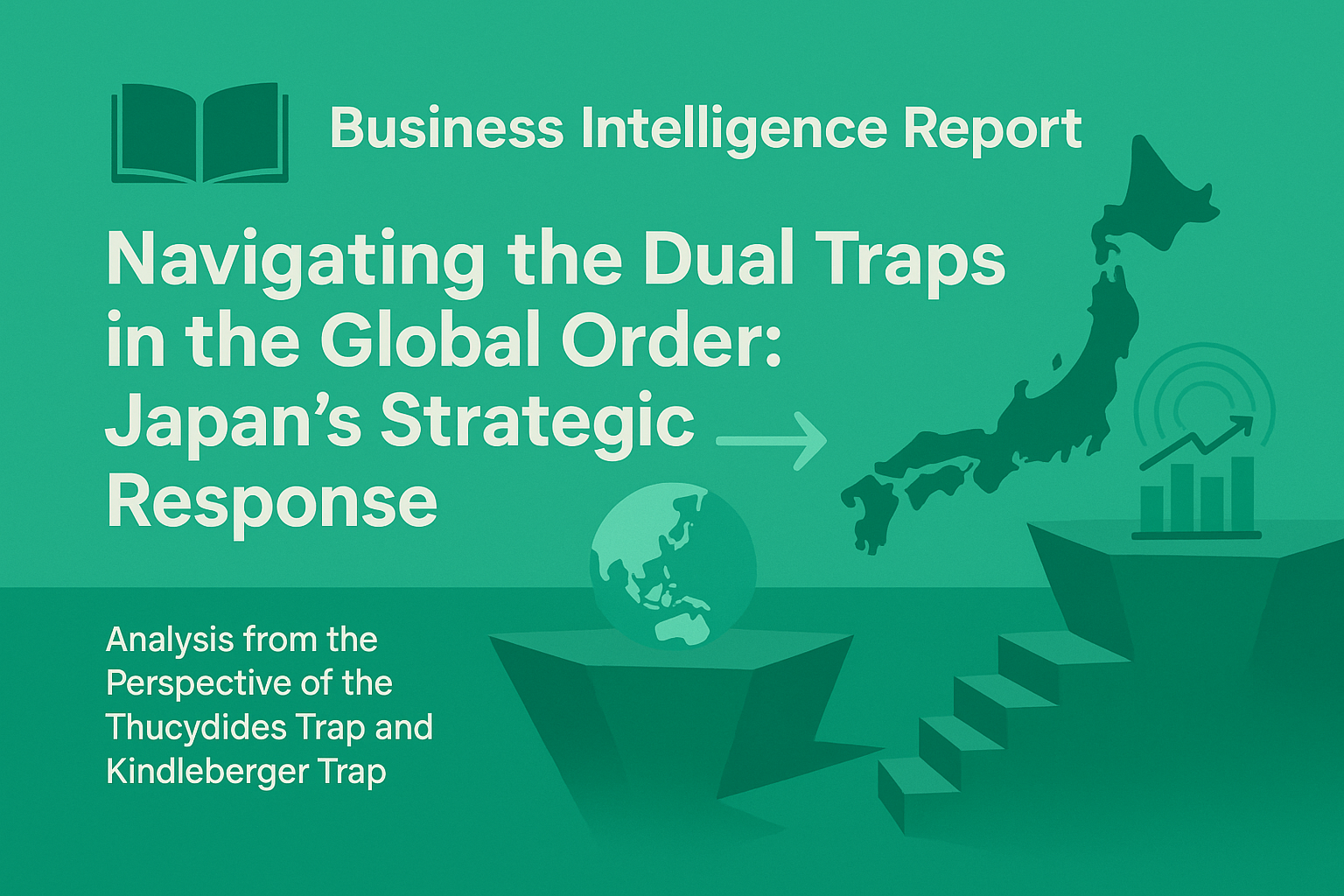Date: June 2025
Author: Senior Economist, International Strategic Affairs
1. Executive Summary
Today’s global landscape is increasingly defined by two structural risks:
- The Thucydides Trap, where hegemonic rivalry between the United States and China heightens the risk of military conflict.
- The Kindleberger Trap, where the absence of a global public goods provider leads to institutional breakdown and systemic instability.
For Japan, these overlapping dynamics pose serious challenges: from the Taiwan Strait crisis and supply chain fragmentation, to intensified geopolitical tensions. This report outlines six strategic pillars that Japan must adopt to enhance national resilience and contribute as a stabilizing force within a fractured international system.
2. Understanding the Two Traps
2.1 Thucydides Trap: Structural Conflict Between Hegemons
- Incumbent Power: The U.S. (liberal order, alliance network, tech supremacy)
- Rising Power: China (state capitalism, BRI, BRICS expansion)
- Flashpoints: Taiwan, semiconductors, AI, South China Sea, currency wars
2.2 Kindleberger Trap: Absence of a Global Stabilizer
- The U.S. retreats from multilateralism and global leadership (WTO deadlock, Paris Agreement exit).
- China is ascending but reluctant to provide global public goods or enforce international norms.
- Result: Failure of coordinated responses to pandemics, climate change, financial instability.
3. Japan’s Geoeconomic Position
| Dimension | Status | Note |
|---|---|---|
| Geography | On the frontline of U.S.–China conflict | High risk of entanglement in Taiwan contingency |
| Trade Structure | Highly dependent on both the U.S. and China | Decoupling infeasible |
| Security | Reliant on U.S. alliance | Needs autonomy and diversification |
| Global Standing | Trusted G7/OECD member | High credibility in Asia and beyond |
4. Strategic Recommendations from an Economist’s Perspective
4.1 Secure Strategic Autonomy
- Bolster domestic capacity in semiconductors, energy, food security
- Enforce the Economic Security Promotion Act
- Invest in space, cyber, and AI defense infrastructure
4.2 Diversify Diplomatic Alliances
- Deepen U.S. alliance, while building ties with India, France, ASEAN
- Maintain pragmatic dialogue with China through economic channels
4.3 Evolve as a Public Goods Provider
- Lead in infrastructure, healthcare, and green transformation (GX)
- Reform ODA to enhance strategic soft power and climate diplomacy
4.4 Safeguard Rules-Based Institutions
- Champion WTO and IMF reform
- Promote high-standard trade blocs (CPTPP, Japan–EU EPA)
4.5 Enhance Soft Power and Human Capital
- Expand inbound skilled talent and exchange programs
- Leverage culture, education, and tech for regional influence
4.6 Promote National Consensus and Social Resilience
- Improve transparency in security and economic policy
- Reform fiscal distribution to prevent domestic polarization
5. Implications for Japanese Businesses
| Sector | Shift | Strategic Response |
|---|---|---|
| Supply Chains | U.S.–China fragmentation | Prioritize adaptive over redundant networks |
| Trade | Dual-framework with EPA + FTA | Invest in compliance and policy intelligence |
| Resources | Green transition & rare metal race | Strengthen stockpiling and strategic partnerships |
| Labor | Global talent competition | Develop inclusive hiring and overseas hubs |
6. Conclusion: From Follower to Stabilizer
The weakening of U.S. hegemony and the rise of a reluctant China have exposed the global order to a double trap. Japan stands at a unique crossroads: not as a hegemon, but as a credible and neutral stabilizer.
The time has come for Japan to shift from a “reactive economic follower” to a “proactive provider of international stability.”


